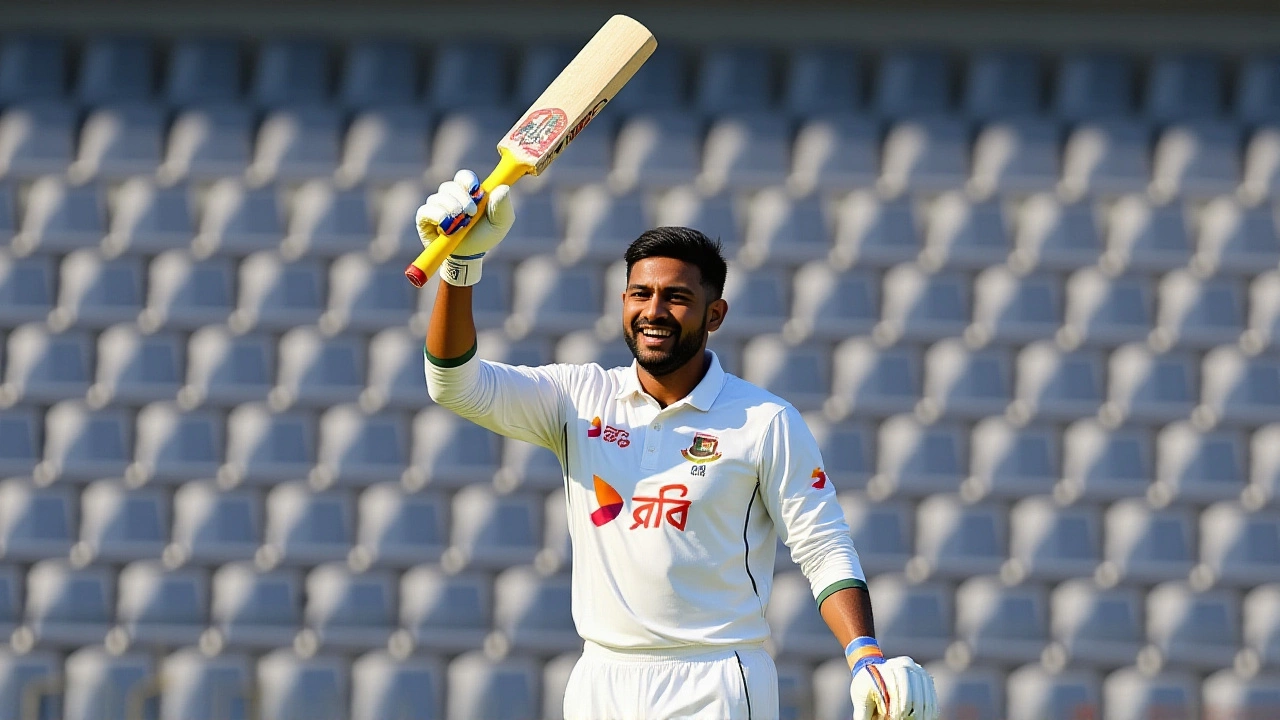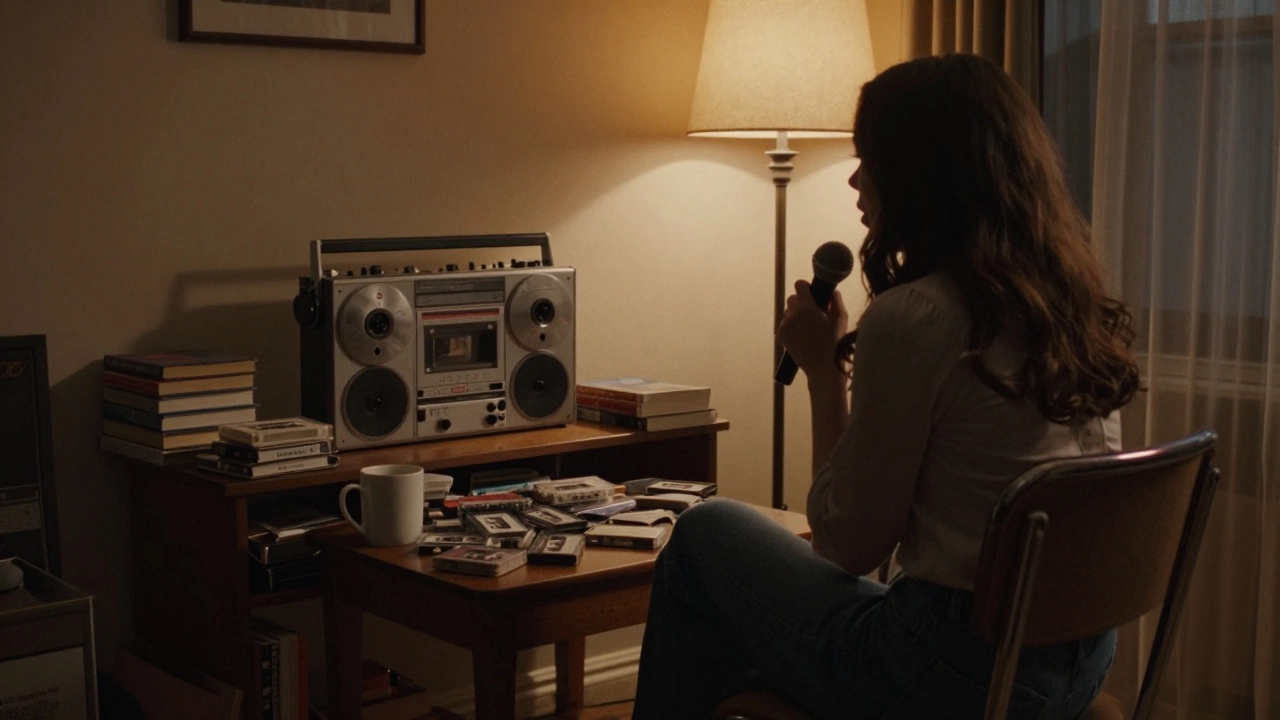When the ground shook beneath the Shere Bangla National Stadium in Dhaka on Wednesday, November 19, 2025, play didn’t just pause—it held its breath. An earthquake, though minor and without reported damage, rattled the stands and sent players instinctively stepping away from the pitch. By the time the umpires signaled for a restart, Ireland cricket team had already lost five wickets. But what followed wasn’t panic—it was poise. Lorcan Tucker, Ireland’s ever-reliable middle-order anchor, stood tall, scoring 75 not out in a performance that felt less like a batting innings and more like a defiant act of will.
Earthquake, Then Excellence
The tremor struck just after tea, during Ireland’s second hour of batting on Day 3. Players froze. Spectators clutched their seats. Umpires Richard Illingworth and Sam Nogajski consulted with match referee Andy Pycroft before clearing the field. No injuries were reported. No structural concerns. But the psychological impact? That lingered. When play resumed 22 minutes later, Ireland was 184 for 5. The scoreboard looked grim. The crowd, sparse but vocal, held their silence. Then Tucker and debutant Stephen Doheny walked out. Their 81-run sixth-wicket stand wasn’t just the second-highest for that wicket in Ireland’s Test history—it was a lifeline. Doheny, uncapped before this series, played with a calmness that belied his inexperience, smacking four boundaries in his 46 before falling to a sharp catch at slip. Tucker, meanwhile, was clinical. He didn’t try to dominate. He didn’t force shots. He just kept the scoreboard ticking, rotating strike with surgical precision. His partnership with Gavin Hoey earlier in the innings—71 runs for the eighth wicket—had already set a new record for Ireland. Now, he’d done it again, higher up the order.Bangladesh’s Commanding Lead
While Ireland fought for dignity, Bangladesh was building a fortress. Their first innings of 476, built around a patient 124 from captain Najmul Hossain Shanto and a brisk 89 from Towhid Hridoy, had already given them control. Then, after bowling Ireland out for 265, Bangladesh returned to the crease and reached 156 for 1 in just 37 overs by stumps. That gave them a lead of 367 runs. And yet, they chose not to enforce the follow-on. That decision surprised some. With the pitch showing signs of wear and the weather holding, many expected Bangladesh to send Ireland back in immediately. But head coach Chandika Hathurusingha, known for his methodical approach, opted to bat again. Why? To protect his bowlers. To tire out Ireland’s fragile batting order. To ensure the match didn’t end in a draw. It’s a calculated gamble—and it’s working.
Debutants and the Future of Irish Cricket
This series has been billed as a turning point for Cricket Ireland. With veteran players like Andrew Balbirnie and Paul Stirling sidelined by injury or rotation, the selectors handed debuts to four uncapped players in the two-Test series. Doheny is the first to make a mark, but he’s not alone. Matthew Humphreys, who fell just short of a half-century on Day 3, showed glimpses of composure under pressure. Gavin Hoey, at 23, has already played three first-class centuries this season and looked composed against Bangladesh’s spinners. Heinrich Malan, Ireland’s head coach, said before the match that his team needed to “go through the gears.” He wasn’t just talking about intensity. He was talking about evolution. This generation of Irish cricketers doesn’t have the luxury of playing in the Ashes or the World Cup. Their path is harder. Fewer resources. Less exposure. But on Wednesday, in the shadow of an earthquake, they showed they’re ready to grow.What Comes Next?
The match resumes on Thursday, November 20, 2025, at 9:30 AM Bangladesh Standard Time. Ireland must survive the morning session to avoid the follow-on, which would mean batting again with only 11 runs to their name. But even if they do, Bangladesh’s lead is too vast to overcome. The real story now isn’t who wins—it’s whether Ireland’s young core can survive a full day against a home side that’s playing with quiet confidence. The pitch, now cracked in places and offering turn to spinners, will only deteriorate. Bangladesh’s off-spinner Mehidy Hasan, who took 4 for 67 in the first innings, will be licking his lips. Ireland’s answer? Tucker. Again. He’s the only player in their squad who’s batted in all four innings of this series. He’s now in eight of the 20 highest partnerships in Ireland’s Test history. That’s not luck. That’s legacy.
Behind the Scenes
Off the field, the Dutch-Bangla Bank Bangladesh Ireland Test Series 2025 has drawn little attention beyond cricket circles. No major broadcast deals were announced. No sponsorships leaked. But the Bangladesh Cricket Board, which runs the Shere Bangla National Stadium, has quietly invested in better facilities for touring sides—something that’s been lacking in past years. The pitch, though slow, was well-prepared. The dressing rooms were clean. The umpiring team—led by England’s Illingworth and Australia’s Nogajski—was professional. For Ireland, this series isn’t about winning. It’s about proving they belong. And on Day 3, in the middle of an earthquake and a crumbling scoreboard, they did just that.Frequently Asked Questions
Why didn’t Bangladesh enforce the follow-on despite having a 367-run lead?
Bangladesh’s coach, Chandika Hathurusingha, chose to bat again to protect his bowlers from overuse and to maximize the chance of a win. With the pitch deteriorating and Ireland’s batting fragile, keeping his frontline spinners fresh for a long second innings was key. Enforcing the follow-on would’ve risked a draw if Ireland batted deep.
How significant is Lorcan Tucker’s performance for Ireland’s future in Test cricket?
Tucker’s 75* on Day 3 was his seventh Test fifty in his 15th match, and he now features in eight of Ireland’s 20 highest Test partnerships. With no clear successor in sight, he’s become the de facto anchor of their middle order. His consistency under pressure—especially against spin—makes him indispensable as Ireland tries to stabilize its Test program.
What impact did the earthquake have on the match’s outcome?
The earthquake didn’t change the scoreboard, but it changed the momentum. Ireland was on the brink of collapse at 184 for 5. The break gave them mental space to regroup. Tucker later said in a post-session interview that the pause “felt like a reset button.” Their partnership with Doheny followed immediately after, suggesting the interruption may have saved their innings.
Is this the start of a new era for Irish Test cricket?
With four debutants in this two-Test series and veterans sidelined, Cricket Ireland is clearly rebuilding. Doheny and Humphreys showed promise, and Tucker’s leadership is growing. While they’re still years away from competing with top-tier sides, this series is a crucial step in developing a core group that can sustain Test cricket beyond one-off tours.



